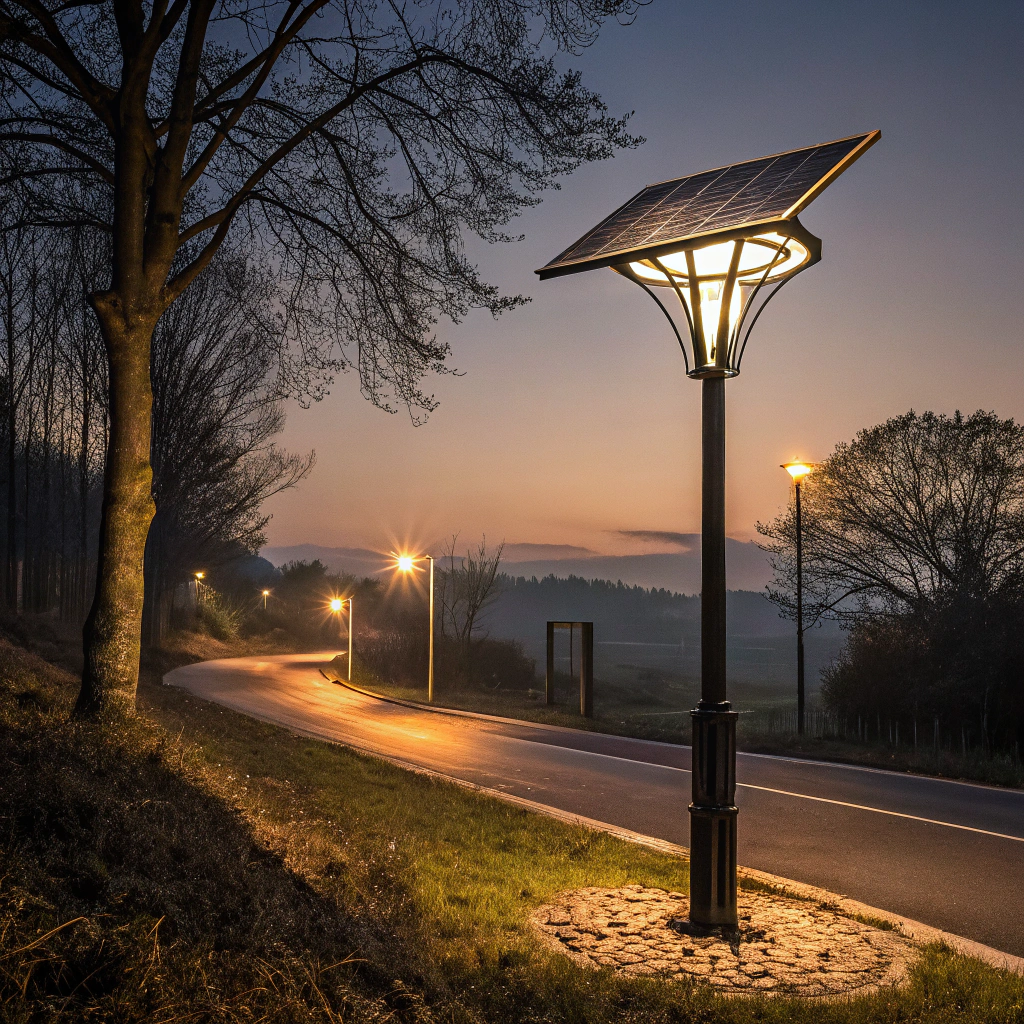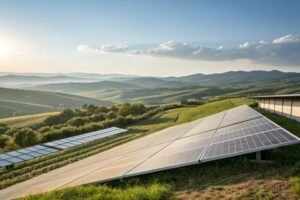How to achieve stable power supply in continuous rainy days for solar street lights?
•
How to achieve stable power supply in continuous rainy days for solar street lights?
Rainy days can be a nightmare for solar street lights, but with the right solutions, you can keep them shining bright even during prolonged bad weather.
To ensure stable power supply during continuous rainy days, solar street lights should be equipped with high-capacity batteries, optimized solar panel angles, and intelligent energy management systems that prioritize power during low sunlight conditions.

Solar Street Light in Rainy Weather
Transitioning from conventional lighting to solar-powered solutions offers sustainability, but weather dependency remains a challenge. Let’s explore how to overcome this obstacle efficiently.
What are the performance differences between different types of batteries (e.g. lithium batteries and gel batteries) in solar street lights?
Ever wondered why some solar street lights last longer in the rain than others? The battery type plays a crucial role.
Lithium batteries outperform gel batteries in solar street lights due to higher efficiency, longer lifespan, and better performance in low-temperature conditions, making them ideal for continuous rainy days.
![Comparison of lithium vs. gel batteries]
Lithium vs. Gel Battery
Key Differences Between Lithium and Gel Batteries
| Feature | Lithium Battery | Gel Battery |
|---|---|---|
| Efficiency | 95%-98% | 80%-85% |
| Lifespan | 5-10 years | 3-5 years |
| Temperature Tolerance | -20°C to 60°C | 0°C to 40°C |
| Maintenance | Maintenance-free | Requires periodic checks |
Why Lithium Batteries Are Better for Rainy Conditions
-
Higher Depth of Discharge (DoD):
- Lithium batteries can discharge up to 90% without damage, while gel batteries should not exceed 50%. This means lithium batteries store more usable energy.
-
Faster Charging:
- Even short periods of sunlight can significantly recharge lithium batteries, making them more reliable during intermittent rainy weather.
-
Compact & Lightweight:
- Their smaller size allows for more flexible installation, sometimes even integrated into the solar panel structure for better weather resistance.
When to Choose Gel Batteries
- Budget constraints: Gel batteries are cheaper upfront.
- Mild climates: Where extreme cold or heat isn't a concern.
For rainy or unpredictable climates, lithium batteries are the clear winner.
Lithium batteries are more efficient than gel batteries.
✅ True – Lithium batteries have higher charge/discharge efficiency (95%-98%) compared to gel (80%-85%).
Gel batteries last longer than lithium batteries.
❌ False – Lithium batteries typically last 5-10 years, while gel batteries last 3-5 years.
How does the angle and orientation of the photovoltaic panel affect the overall power generation efficiency?
Have you noticed some solar street lights perform better even in overcast conditions? The secret often lies in the panel’s angle.
Optimizing the solar panel angle and orientation maximizes sunlight capture, increasing power generation efficiency by up to 30%, which is critical for maintaining energy reserves during rainy days.
![Solar panel angle optimization]
Solar Panel Angle Optimization
Best Practices for Solar Panel Positioning
-
Optimal Tilt Angle:
- Adjust the tilt angle based on latitude.
- Formula: Angle = Latitude × 0.9 + 29° (for winter optimization).
-
Direction:
- In the Northern Hemisphere, panels should face true south for maximum exposure.
-
Avoid Shading:
- Even partial shade (e.g., from trees or buildings) can drastically reduce efficiency.
Impact on Rainy Weather Performance
- Self-cleaning effect: A steeper angle (30-40°) helps rainwater wash away dust, maintaining efficiency even after rain.
- Low-light performance: Bifacial solar panels can capture diffused light on cloudy days, supplementing energy storage.
Adjustable vs. Fixed Panels
| Type | Pros | Cons |
|---|---|---|
| Fixed | Lower cost, less maintenance | Less efficient in winter |
| Adjustable | 10-25% higher efficiency | Higher initial cost |
For regions with frequent rain, slightly increasing the tilt angle helps improve energy capture during shorter daylight hours.
South-facing panels generate the most energy in the Northern Hemisphere.
✅ True – Facing true south maximizes sunlight exposure in the Northern Hemisphere.
Solar panels should be laid flat for best rainy-day performance.
❌ False – A steeper angle (30-40°) helps with self-cleaning and winter sun exposure.
How to realise the intelligent control and remote monitoring function of solar street light?
What if your solar street lights could "think" and adapt to weather changes automatically? Smart controls make this possible.
Intelligent control and remote monitoring in solar street lights use IoT-enabled systems with motion sensors, adaptive brightness, and cloud-based analytics to optimize energy use and provide real-time performance data.
![Smart solar street light control system]
Smart Solar Street Light System
Key Features of Smart Solar Street Lights
-
Motion Sensors & Adaptive Lighting:
- Lights dim when no motion is detected, conserving energy for rainy days.
-
Cloud-Based Monitoring:
- Track power levels, battery health, and solar input remotely via apps like SolarEdge or LuminSmart.
-
Weather-Adaptive Mode:
- Automatically reduces brightness during extended rainy periods to prolong battery life.
-
Fail-Safe Alerts:
- Sends notifications for issues like panel obstruction or battery drain.
How Remote Monitoring Helps in Rainy Conditions
- Energy Reserve Prediction: AI estimates backup power based on weather forecasts.
- Diagnostics: Detects if rain or dust is blocking efficiency and issues maintenance alerts.
Cost vs. Benefits
| Investment | Benefit |
|---|---|
| +15-20% upfront cost | 30-50% longer battery lifespan |
| IoT integration | Reduces manual maintenance costs |
For cities or large installations, smart controls are a game-changer for reliability.
Smart solar lights can adjust brightness based on weather forecasts.
✅ True – IoT-enabled lights can optimize energy use ahead of bad weather.
Remote monitoring increases maintenance costs.
❌ False – It reduces manual checks and prolongs system life, cutting long-term costs.
Conclusion
To ensure solar street lights stay operational during continuous rainy days, use lithium batteries, optimize solar panel angles, and integrate smart controls for efficient energy management.




